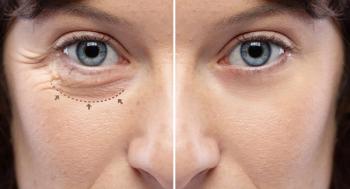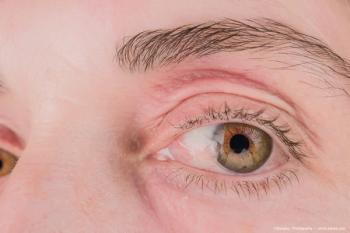
Progression of myopic maculopathy in high myopic eyes under 18
A new study out of Guangzhou, China found that individuals younger than 18 years of age and experiencing high myopia are at a high risk of progressively worsening myopic maculopathy.
A research team led by first author Feng Jiang, MD, reported that myopic maculopathy progressed in about 12% of pediatric patients with high myopia over a 4-year period, with diffuse atrophy the major change. The authors called for close follow-up of these patients and identification of those at higher risk of progression.1
Jiang is from the State Key Laboratory of Ophthalmology, Zhongshan Ophthalmic Center, Sun Yat-sen University, Guangdong Provincial Key Laboratory of Ophthalmology and Visual Science, Guangdong Provincial Clinical Research Center for Ocular Diseases, Guangzhou, China.
The investigators emphasized that individuals with high myopia who are younger than 18 years of age are at a relatively high risk of progressively worsening myopic maculopathy. Additional studies are needed to investigate the progression of myopic maculopathy in this age group, as well as the risk factors associated with progression.
In this observational study, Jiang and colleagues investigated both the 4-year progression rate of myopic maculopathy in children and adolescents with high myopia and potential risk factors for progression.
The study included 548 high myopic eyes (spherical power −6.00 or less diopters) of 274 participants who ranged in age from 7 to 17 years. All participants underwent a comprehensive baseline ophthalmic examination and 4-year follow-up. The main outcomes were the progression of myopic maculopathy over 4 years and the associated risk factors.
The authors reported that 67 of the 548 eyes (12.2%) had progression of myopic maculopathy over the 4-year follow-up. A total of 88 lesion changes were identified, including new signs of a tessellated fundus in 16 eyes (18.2%), diffuse atrophy in 12 eyes (13.6%), patchy atrophy in 2 eyes (2.3%), lacquer cracks in 9 eyes (10.2%), and enlargement of diffuse atrophy in 49 eyes (55.7%).
The factors identified by multivariate analysis as being associated with progression of myopic maculopathy were worse best-corrected visual acuity (odds ratio [OR], 6.68; 95% confidence interval [CI], 1.15-38.99; P = 0.04), longer axial length (OR, 1.73; 95% CI, 1.34-2.24; P < 0.001), faster axial length elongation (OR, 302.83; 95% CI, 28.61-3205.64; P < 0.001), more severe myopic maculopathy (diffuse atrophy; OR, 4.52; 95% CI, 1.98-10.30; P < 0.001 and patchy atrophy; OR, 3.82; 95% CI, 1.66-8.80; P = 0.002), according to the investigators.
Individuals under 18 years of age with high myopia are at relatively high risk of progressively worsening myopic maculopathy. Additional studies are needed to investigate the progression of myopic maculopathy in this age group and the risk factors associated with progression. These findings support consideration of follow-up in these individuals and identifying those at higher risk for progression, the authors concluded.
Reference:
Jiang F, Wang D, Xiao O, et al. Four-year progression of myopic maculopathy in children and adolescents with high myopia. JAMA Ophthalmol. Published online January 25, 2024. doi:10.1001/jamaophthalmol.2023.6319
Newsletter
Don’t miss out—get Ophthalmology Times updates on the latest clinical advancements and expert interviews, straight to your inbox.










































